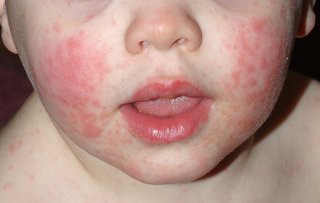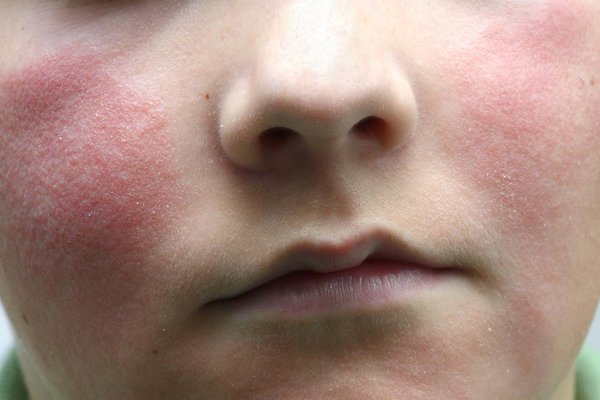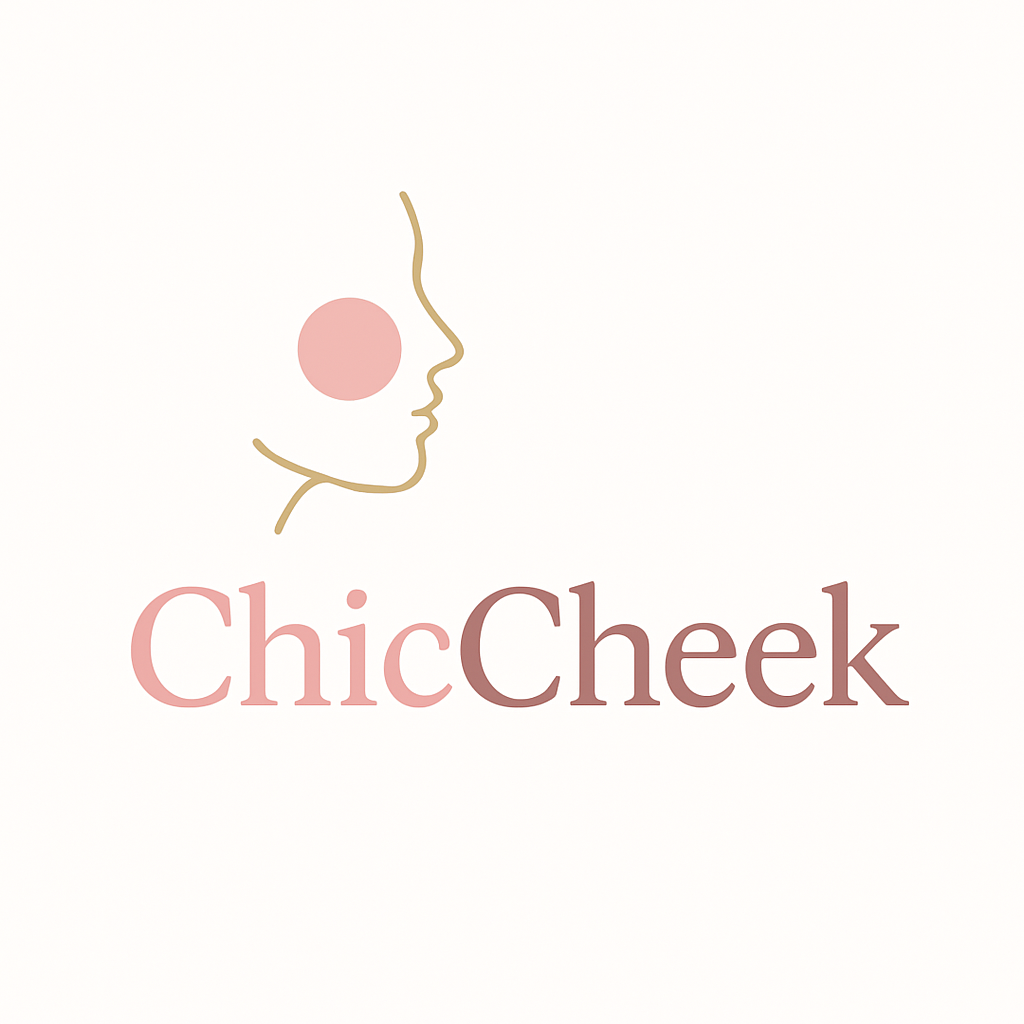Have you ever noticed a bright red rash on a child’s cheeks and wondered what it could be? That’s often a sign of Slapped Cheek Syndrome.
It’s a common illness that can catch you off guard, especially if you don’t know what to look for. Understanding this condition can help you protect yourself and your loved ones. Keep reading to discover what Slapped Cheek Syndrome really is, how it spreads, and what you can do if you or someone close to you shows the symptoms.
This knowledge might just save you from unnecessary worry and keep your family healthy.
Causes Of Slapped Cheek Syndrome
Slapped Cheek Syndrome is a common childhood illness. It causes a red rash on the cheeks. Understanding the causes helps prevent its spread. The syndrome is contagious and spreads easily.
What Causes Slapped Cheek Syndrome?
The illness is caused by a virus called Parvovirus B19. This virus infects the cells in the throat and nose. It spreads through coughs, sneezes, or close contact.
How Does The Virus Spread?
The virus spreads from person to person. It passes through tiny droplets in the air. Touching surfaces with the virus and then touching your face can also spread it.
Who Is Most At Risk?
Children between 5 and 15 years old get infected most. People with weak immune systems have a higher risk. Pregnant women also need to be careful around infected people.

Credit: www2.hse.ie
Recognizing The Symptoms
Recognizing the symptoms of Slapped Cheek Syndrome helps in early care. This illness mostly affects children but adults can get it too. Symptoms show in stages. Knowing these signs makes it easier to manage the condition.
The symptoms start with mild fever and feeling tired. Then, a bright red rash appears on the cheeks. This rash looks like a slap mark, giving the syndrome its name.
Early Signs And Fever
At first, the person may feel tired and weak. A low fever often appears. These signs may last for a few days. The sickness can feel like a cold or flu.
Red Rash On Cheeks
The most clear sign is a red rash on both cheeks. It looks like the cheeks were slapped. The rash is bright red and may be warm to touch. It usually does not itch or hurt.
Body Rash And Itching
After the cheek rash, a light rash may spread to the body. The rash often appears on arms, legs, and trunk. It looks lacy or net-like. It may cause mild itching but not always.
Other Symptoms To Notice
Some people may have a headache or sore throat. Joint pain can happen, especially in adults. These symptoms usually go away in a week or two.
Who Is Most At Risk
Slapped Cheek Syndrome mainly affects certain groups more than others. Understanding who is most at risk helps in taking the right steps to prevent it. This illness spreads easily, especially in places where people are close together.
Children Under 10 Years Old
Young children catch Slapped Cheek Syndrome most often. Their immune systems are still growing. Schools and daycare centers make it easier for the virus to spread. Kids usually get it from other children coughing or sneezing nearby.
Pregnant Women
Pregnant women face higher risks from this infection. It can harm the unborn baby in rare cases. Doctors advise pregnant women to avoid contact with infected people. Early care helps protect both mother and child.
People With Weak Immune Systems
Those with weak immune systems are vulnerable. This includes people with certain illnesses or on special medicines. Their bodies cannot fight the virus well. Extra caution is important for these individuals.
Close Family Members And Caregivers
Family members and caregivers of infected people have higher chances of catching the virus. They spend more time near the sick person. Wearing masks and washing hands reduce the risk.

Credit: www.familycorner.co.uk
Treatment Options
Treatment options for Slapped Cheek Syndrome focus on relieving symptoms. The illness usually gets better on its own. Most people recover without special medicine. Still, some steps can help ease discomfort and speed up healing.
Rest And Hydration
Rest is important for recovery. The body needs time to fight the virus. Drinking plenty of fluids helps keep the body strong. Water, juice, and clear soups are good choices.
Pain And Fever Relief
Over-the-counter medicines can reduce fever and pain. Acetaminophen or ibuprofen can ease aches and lower temperature. Follow the instructions on the label carefully.
Skin Care
The rash usually fades without treatment. Avoid scratching to prevent skin damage. Use gentle soaps and moisturizers to soothe skin irritation.
When To See A Doctor
Seek medical advice if symptoms worsen. High fever, severe rash, or joint pain need attention. Pregnant women and people with weak immune systems should consult a doctor quickly.
Preventing The Spread
Preventing the spread of Slapped Cheek Syndrome is important to keep others safe. This illness spreads easily, especially among children. Taking simple steps can help stop the virus from moving from one person to another. Understanding how to reduce contact and keep clean helps protect families and schools.
Keep Good Hand Hygiene
Washing hands often with soap and water lowers the chance of spreading the virus. Clean hands remove germs picked up from surfaces or from touching the face. Hand sanitizer works if soap is not nearby. Teach children to wash hands before eating and after using the bathroom.
Avoid Close Contact
Stay away from people showing symptoms of Slapped Cheek Syndrome. Avoid hugging, kissing, or sharing drinks and utensils. Keep sick children home from school or daycare to stop spreading the infection. Limiting close contact reduces the chance of catching the virus.
Clean And Disinfect Surfaces
Wipe down toys, doorknobs, and tables often. The virus can live on surfaces for hours. Use disinfectant sprays or wipes to kill germs. Regular cleaning helps keep the environment safer for everyone around.
Cover Coughs And Sneezes
Use a tissue or the elbow to cover the mouth and nose when coughing or sneezing. This stops droplets containing the virus from spreading through the air. Throw tissues in the trash right away and wash hands afterward.

Credit: www.nhs.uk
Frequently Asked Questions
What Causes Slapped Cheek Syndrome?
Slapped Cheek Syndrome is caused by parvovirus B19 infection. It spreads through coughs and sneezes.
What Are The Main Symptoms Of Slapped Cheek Syndrome?
Symptoms include bright red cheeks, mild fever, rash, and sometimes joint pain.
Who Is Most At Risk Of Slapped Cheek Syndrome?
Children aged 5-15 are most at risk, but adults can also catch it.
How Long Does Slapped Cheek Syndrome Last?
The illness usually lasts 1 to 3 weeks, with rash fading gradually.
Can Slapped Cheek Syndrome Be Treated With Medicine?
No specific medicine exists; treatment focuses on relieving symptoms like fever and itching.
Is Slapped Cheek Syndrome Contagious To Others?
Yes, it spreads easily before the rash appears but is less contagious afterward.
Conclusion
Slapped Cheek Syndrome causes a bright red rash on the cheeks. It mainly affects young children but can happen to adults too. The illness spreads easily through coughs and sneezes. Most people recover without serious problems. Rest and fluids help the body heal.
Knowing the symptoms helps parents act quickly. Doctors can provide advice for care and comfort. Staying informed keeps families safe and healthy. Understanding this syndrome makes dealing with it easier.
Munia Akondh is a passionate skincare writer with a foundation in life sciences, which gives her a unique scientific perspective on beauty and skincare. As a digital marketer and skincare geek, Munia combines her love for product research, skin health, and marketing to create insightful content that resonates with beauty enthusiasts. Her expertise spans from understanding skincare ingredients to keeping up with the latest trends, making her a trusted voice in the industry.
